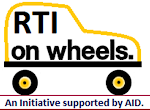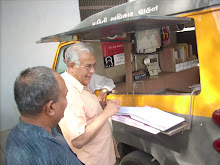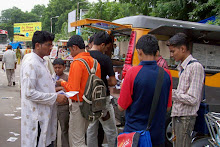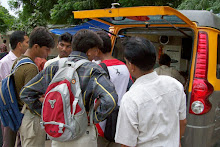There is good news for the visually impaired who would like to seek information under the Right to Information Act, 2005.
Meghalaya has prepared a booklet using Braille codes in English to help them understand the power of the act.
After the successful launch of the booklet on issues pertaining to filing of applications under the act and its provisions a year ago, Meghalaya is planning to release booklets of Braille codes in Khasi and Garo languages to help a large section understand the act’s positive aspects.
The English booklet: A Guide to the Right to Information Act 2005 for the Visually Impaired, an initiative of the Legal Awareness Cell, Bethany Society and the Meghalaya Administrative Training Institute, highlights the various clauses of the act and how to file an application, among others.
“The basic purpose of preparing the booklet was to take the RTI Act to a large section of the visually impaired people in the state who have no access to various aspects of the act,” Anita Kharpor, the deputy director of the Meghalaya Administration and Training Institute, told this correspondent.
The institute imparts training on the use of the act.
“During our training, we felt the need of making the act more popular among the disabled and hence sought the help of Bethany Society, Shillong, in preparing the English Braille booklet on the use of the act,” she said.
According to the 2001 census, 46.5 per cent of the 28,803 disabled population in the state is visually impaired.
The number is set to be tripled, according to the latest census which will be out next year.
Kharpor indicated that the Meghalaya government was not aware of any other state taking a similar initiative to bring out RTI documents in Braille.
The challenge before the government now will be to prepare the staff to understand Braille so that when the visually impaired applicants file RTI applications in Braille, the officials can reply in Braille.
The current practice is that the officials take down the questions on behalf of the visually impaired and provide information. However, with the use of English Braille booklet and the subsequent Khasi and Garo Braille versions of it in the offing, the visually impaired can ask questions in Braille.
“In this context, the question is whether we need to train our personnel to learn Braille so that the reply can also be given in Braille,” an official said.
The practical option at present is to seek the translation of the questions written in Braille from the institutes which teach Braille, according to the official.
The executive director of Bethany Society, Carmo Noronha, said the guide to RTI Act in Braille would help the visually impaired to know about their rights.
“Many people in the rural areas do not understand English, so we are planning to bring out Khasi and Garo Braille books on RTI as this will be an advocacy tool to fight for their rights,” Noronha said.
The member of Bethany Society and headmistress, Jyoti Sroat School, Shillong, Bertha Dkhar, who herself is visually impaired, has already developed a Braille code in Khasi.
Braille in Garo codes is also mostly used by the visually impaired in the Garo hills.
Norohna said that the use of Braille in RTI has not been popularised elsewhere in the country.
According to Norohna, once the RTI materials are printed in Khasi and Garo codes of Braille, more awareness will be created on the right.














































































